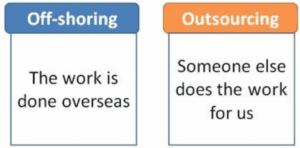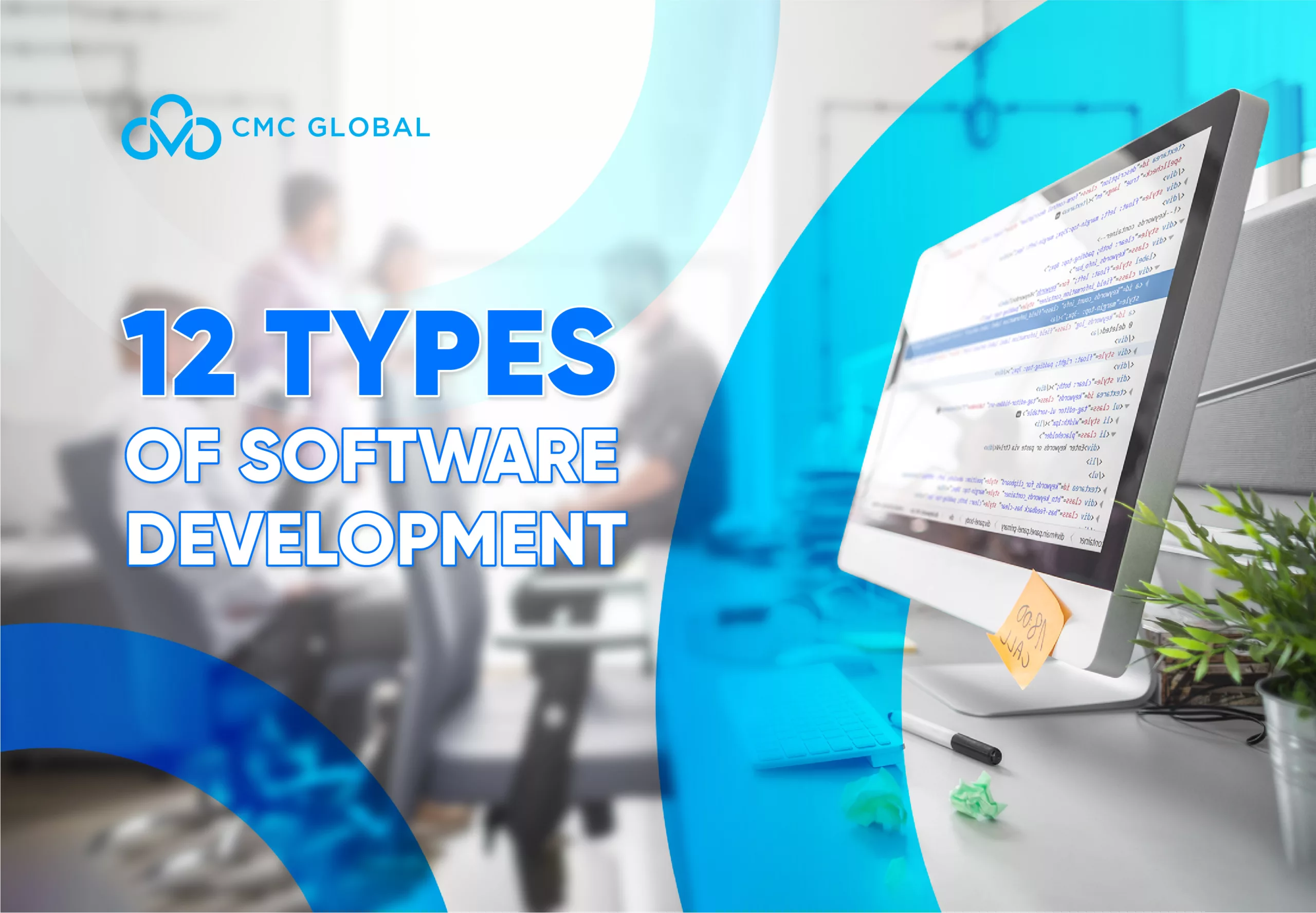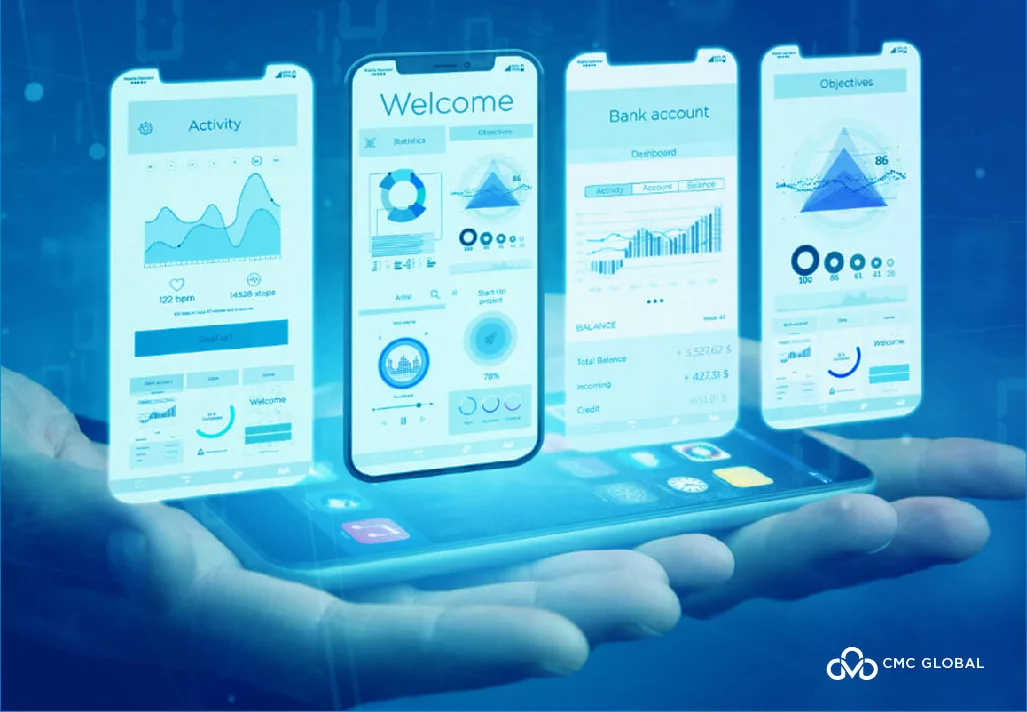Companies in today’s rapidly changing business world are constantly looking for new ways to boost their competitiveness, efficiency, and profitability by developing high-quality software products. One approach that has gained increasing popularity in recent years is offshore development. In this article, CMC Global will cover everything you need to know about offshore development, including its benefits, challenges, best practices, and emerging trends.

Offshore Development
What is Offshore Development?
“Offshore development”, also understood as a form of “Outsourcing Software Engineering” is a process that involves hiring a third-party team of developers, designers, and engineers from a foreign country or a different region to your operational location to work on a project for your company. The main agenda of this practice is to access and leverage the skills and expertise of highly qualified professionals from around the world for superior quality while keeping operational costs modestly efficient.

The difference between Off-shoring and Outsourcing
Next, the article will touch on the diversity of available models.
Offshore Development Service
If your company is looking for a long-term partnership with an offshore development team, you may consider establishing an offshore development center (ODC). An ODC is a dedicated team of developers, designers, and engineers that work exclusively for your company.
Offshoring can involve several IT services, such as the development of mobile applications and platforms, the testing of software, the analysis of data, consulting on business technology, and having a specialized team.
Offshore Development Center Models: ODC Models
There are several development models that are ready for selection:
Software ODC Trust:
Here are several benefits of it:
- Suited for clients who demand top-notch security levels in their design models.
- Tailored for custom-made, one-of-a-kind, and highly confidential software
Whereas,
Software ODC Classic:
- The most popular by-demand software development model.
- The model includes a dedicated team with the needed expertise for project delivery with a compulsory project manager’s supervision.
- Suited for wide-variety projects, such as updates and expansion on the previous software version, support, migration to other platforms, or new code writing.
Software ODC Branded:
- The perfect solution for hyper-active, heavy-involvement businesses and corporations for better process control and development process.
Turning to
ODC Full Form:
- Also referred to as private ODC
- This model allows customers to get their own development centers in other countries.
- The group assembled by the team is determined by the needs of the client, and they will work together with the client’s central office to strategize, investigate, evaluate, devise and oversee assignments.
Followingly, we will walk through the many bundles of benefits that this model offers that will justify its application.
Offshore Development: Benefits
Cost Efficient:
One of the primary benefits of offshore development is cost savings.
By outsourcing work to countries with lower labor costs, companies can significantly reduce their development expenses without sacrificing quality. Offshore development enables businesses to access a larger pool of highly skilled talent and expertise that may not be available in their home country.
In particular, startups can reap several advantages from offshore outsourcing of software development, such as diminished expenses and a quicker path to product market penetration.
This cost reduction applies not only to labor costs but also to other overhead costs such as office space, equipment, and benefits. This creates a win-win situation where the commissioning party can benefit from a lack of salary constraints, whereas the commissioned will receive higher-value orders than their normal, locally-adjusted range.
On-demand IT Pool Resource:
If you’re having trouble hiring IT experts in your country, turning to offshore development teams could be a good solution. This can help you address the shortage of IT specialists and alleviate the burden of maintaining in-house development teams after the project is completed.
Offshore development teams possess top-notch knowledge and experience in these areas, allowing them to offer knowledge-based services through offshore outsourcing agreements.
Flexibility:
Offshore development also offers increased flexibility.
Companies can choose between hiring developers for a specific, one-time project or forming a long-term partnership to outsource a significant portion of their development activities. This flexibility allows companies to focus on their core competencies while outsourcing non-core activities to offshore development teams.
Moreover, outsourcing allows companies to quickly ramp up or down their development teams to respond to changes in market conditions, customer demand, or project requirements.
Additionally, in today’s modern day and age, remote team management tools and the best video conferencing software are at our full disposal, enabling work efficiency and smooth international collaboration.
Up-to-date:
Another significant advantage of offshore development is access to the latest technologies and tools. Offshore development companies are often at the forefront of emerging technologies and trends, giving companies access to cutting-edge tools and technologies that they may not have in-house. This access to the latest tools and technologies can help companies improve their competitiveness and accelerate their product development cycles, thus surpassing their competitive counterparts.
That being said, there are always two sides to a coin, and offshore development is not without its challenges, as there are certain drawbacks to Offshore Development as well.

Pros and Cons
Offshore Development: Challenges
Language & Culture Barrier:
One of the biggest challenges is communication. Working across different time zones and cultural differences can make it challenging to establish effective communication and collaboration with the offshore development team. Misunderstandings, delays, and missed deadlines can result from poor communication, leading to increased costs and lower quality.
Risk Management:
Another significant challenge is quality control. It can be difficult to ensure that the work produced by offshore development teams meets the same standards as the work produced by in-house teams. Such drastic discrepancies in language barriers, cultural differences, and different work styles can all impact the quality of the final product. Moreover, intellectual property protection, data security, and compliance with local regulations can also pose challenges in offshore development.

Risk Management
Lacking Transparency:
When you outsource software development to an external vendor, you don’t have as much
wielding power over the mannerism they develop the software, how they handle confidential
information, or how they motivate their team. Therefore, it is a priority to have open
communication to prevent any issues or mistrust between parties.
Best Practices for Offshore Development
To overcome the challenges of offshore development, it’s important to follow best practices.
Project Management:

Project Management
The first step is to establish clear communication channels and protocols. This includes scheduling regular meetings and establishing clear lines of communication for project updates, feedback, and questions. It’s also essential to ensure that both parties have a clear understanding of the project’s scope, timeline, and budget.
Training Materials:
Another best practice is to provide comprehensive training and resources for the offshore development team. This includes providing access to the necessary tools, documentation, and training to ensure that the team can work effectively and efficiently. Additionally, companies should also establish a project management framework that includes milestones, deliverables, and performance metrics to track progress and ensure quality.

Training Materials
It’s best to use the S.M.A.R.T framework to set up a clear set of objectives and expected outputs:
S.M.A.R.T stands for:

S.M.A.R.T Framework
S: Specific:
- What do I want to accomplish?
- Why is this goal important?
- Who is involved?
- Which resources or limits are involved?
M: Measurable:
- How can I know I reached my goals?
- What can be used for reference?
A: Achievable:
- How to achieve the goals (Strategy, Tactic)
- The realistic degree of the task
R: Relevant:
- Is it a top priority?
- Does it align with the company’s vision and mission?
T: Time-bounded
- How much time is needed?
- What is the possible deadline?
Strong Relationship:
Lastly, It’s also vital to cement a strong working relationship with the offshore development team. This includes fostering open and transparent communication, promoting cultural understanding and respect, and building trust through regular interactions and feedback.
Conclusion
Offshore development can be an excellent solution for companies looking to reduce development costs, increase flexibility, and access a broader pool of skilled talent. However, it’s essential to understand the challenges and follow best practices to ensure a successful outcome.
In conclusion, just as proclaimed in the Accelerance Global Software Outsourcing Report 202, ”In the coming year, outsourcing is predicted to be an antidote for economic woes.”
Its 2022 revenue was $116 billion (+6.3% compared to the previous year) whereas its 2027 expected revenue to be $145.7 billion by 2027 (+4.7% CAGR from 2022 to 2027), and 60% of companies planning to outsource some software development in 2023, it’s highly advisable for companies to join in on this new tidal wave.
If you require additional information on the subject, CMC Global is happy to help.
>> REGISTER FOR CMC GLOBAL’S FREE CONSULTATION ON OFFSHORE DEVELOPMENT Contact us for further consultation!




